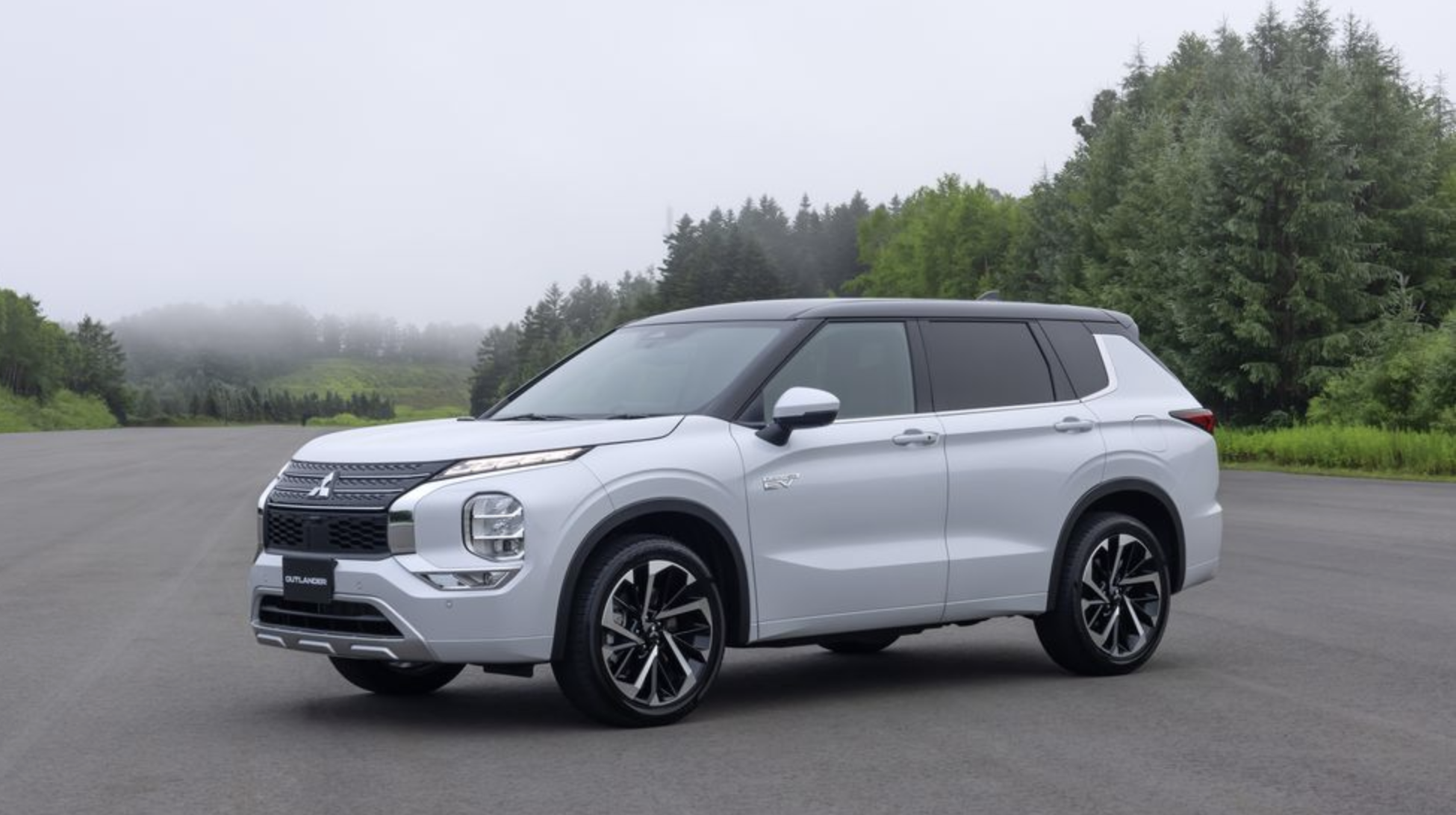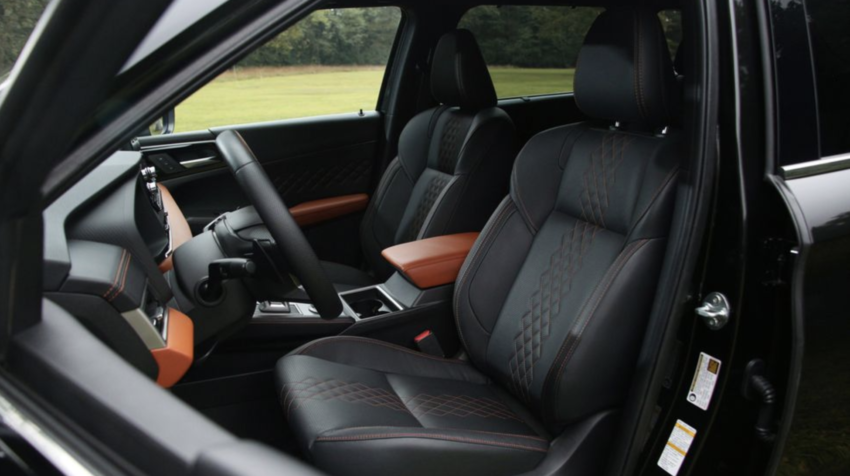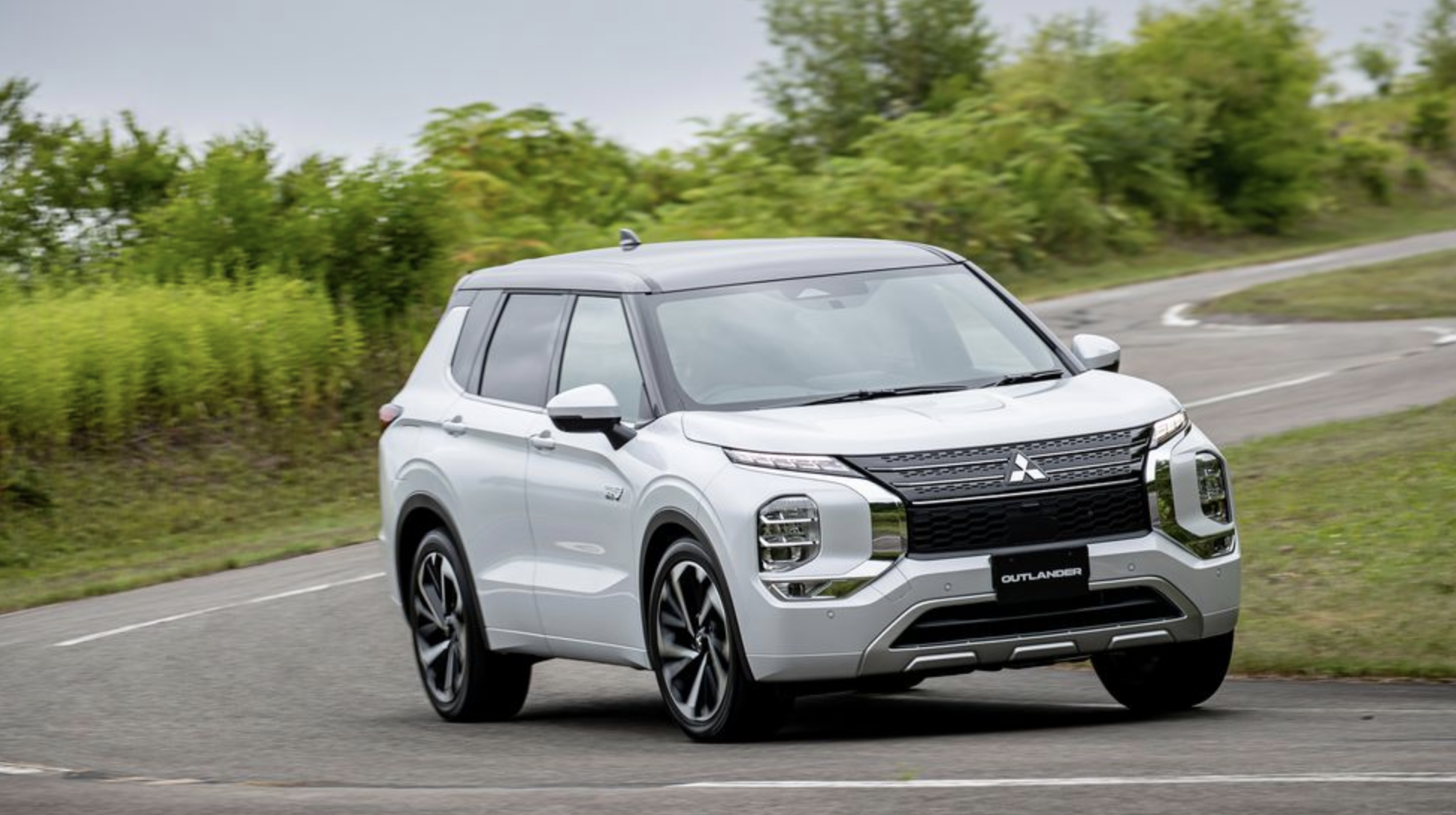
Mitsubishi finally is bringing the updated 2023 Outlander PHEV to our shores, with a significant powertrain update and 38 miles of all-electric range, up almost 60% from the current model’s 24 miles.
That puts it into second place for all-electric travel, trailing the Toyota RAV4 Prime, which can deliver 42 miles, but ahead of the rest of the ever-growing pack – there are more than a dozen – of small-to-midsize PHEV crossovers. The Ford Escape PHEV and Lexus NX 450H+ tie for third place in the electric travel sweepstakes with EPA ratings of 37 miles; the Hyundai Tucson PHEV is in fifth with 33 miles.
In the 2023 Mitsubishi Outlander family, the PHEV replaces the V6-powered model as the top variant. It will come only as a three-row model with seating for seven. But not seven adults – that third row is pretty cramped. Fortunately, it folds away to make room for cargo.
Mitsubishi said the 2023 Outlander PHEV will start at $41,190, about $450 less than the base 2022 RAV4 Prime. Neither vehicle is eligible any longer for a federal income tax credit, thanks to new rules requiring North American assembly for eligibility. A fully-loaded, top-trim version of the 2023 Outlander PHEV will set you back around $50,000,
The new model comes with Mitsubishi’s 2.4-liter Atkinson cycle in-line four and a trio of electric motors – two up front and one on the rear axle – drawing power from a 20 kWh battery pack. The whole setup is rated at 248 horsepower and 332 pound-feet of torque, a considerable improvement from the current Outlander PHEV’s 221 hp.
The system is design to use the gas engine to drive the front wheels, to augment the front-drive e-motor, or to power the second front e-motor as a generator while the drive e-motor turns the front wheels , whichever mode it most efficient. The rear motor drives the rear wheels at all times.

All-wheel drive is standard and the Outlander PHEV uses Mitsubishi’s well-regarded S-AWC, or Super-All-Wheel Control system that manages torque distribution. Power delivery is biased to the rear axle.
There’s a one-pedal mode for regenerative braking, but it isn’ true pne-pedal as it won’t breing the Outlander PHEV to a full stop in most cases, requiring the driver to hit the brake pedal at abopht 5 mph to stop the wheels turning.
Mistubishi continues to limit the Outlander PHEV’s on-board Level 2 (240-volt) charger to 3.3 kW – about 6.5 hours to recharge at home – while competitors all boast faster 6.6kW and even 11kw Level 2 capability.
Unlike most competitors, though, the Outlander PHEV offers DC fast-cage capability as well (higher trims only) – although Mitsubishi is clinging to the CHAdeMo system developed in Japan and now used only by the Outlander and the Nissan Leaf. While most of the DC fast charge stations available in the U.S, today have at least one CHAdeMo-capable charger, Electrify America has said it will stop providing CHAdeMo connections with its new stations, which pretty much signals that the end is nigh for that charging protocol.
[Read all about EV and PHEV charging]
The new Outlander PHEV goes on sale in early December, with some dealerships receiving early deliveries toward the end of November.

Outlander’s S-AWC all-wheel drive is biased to the rear for improved handling. Mitsubishi
